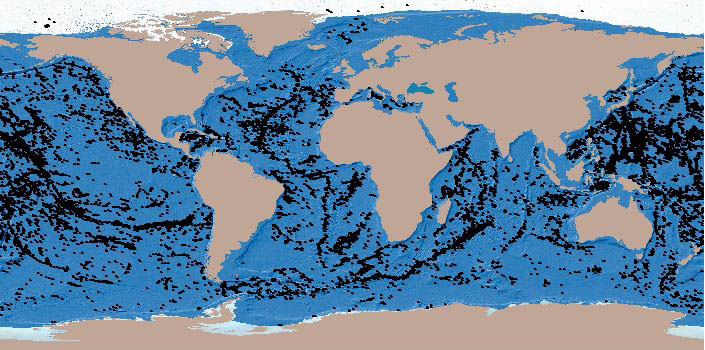Global
| |||
This dataset shows the global distribution of mangroves, and was produced as joint initiatives of the International Tropical Timber Organization (ITTO), International Society for Mangrove Ecosystems (
A comprehensive seafloor biomass and abundance database has been constructed from 24 oceanographic institutions worldwide within the Census of Marine Life (CoML) field projects. The machine-learning algorithm, Random Forests, was employed to model and predict seafloor standing stocks from surface primary production, water-column integrated and export particulate organic matter (POM), seafloor relief, and bottom water properties.
The dataset shows the global patterns of marine biodiversity (species richness) across 13 major species groups ranging from zooplankton to marine mammals (11,567 species in total). These groups include marine zooplankton (foraminifera and euphausiids), plants (mangroves and seagrasses), invertebrates (stony corals, squids and other cephalopods), fishes (coastal fishes, tunas and billfishes, oceanic and non-oceanic sharks), and mammals (cetaceans and pinnipeds).
This dataset contains the global distributions of habitat suitability for seven suborders of cold-water octocorals (Octocorallia) found deeper than 50 m: Alcyoniina, Calcaxonia, Holaxonia, Scleraxonia, Sessiliflorae, Stolonifera, and Subselliflorae.
Working document of the 14th Global Meeting of the Regional Seas Conventions and Action Plans
There is a rising concern regarding the accumulation of floating plastic debris in the open ocean. However, the magnitude and the fate of this pollution are still open questions. Using data from the Malaspina 2010 circumnavigation, regional surveys, and previously published reports, we show a worldwide distribution of plastic on the surface of the open ocean, mostly accumulating in the convergence zones of each of the five subtropical gyres with comparable density.
Abstract
